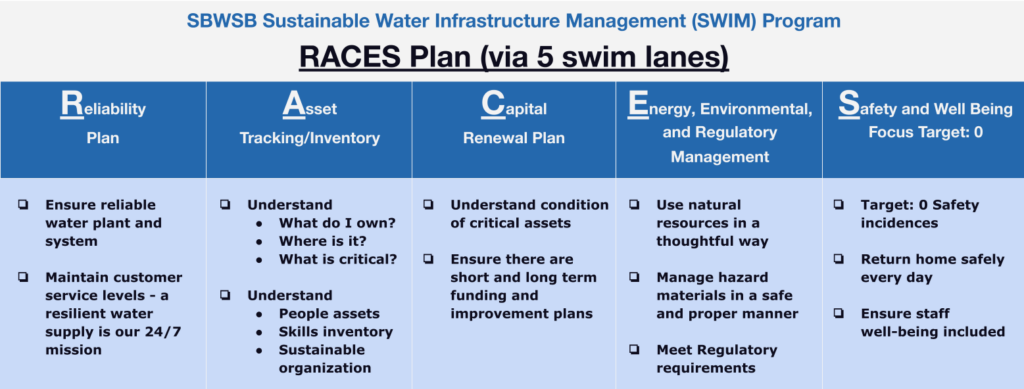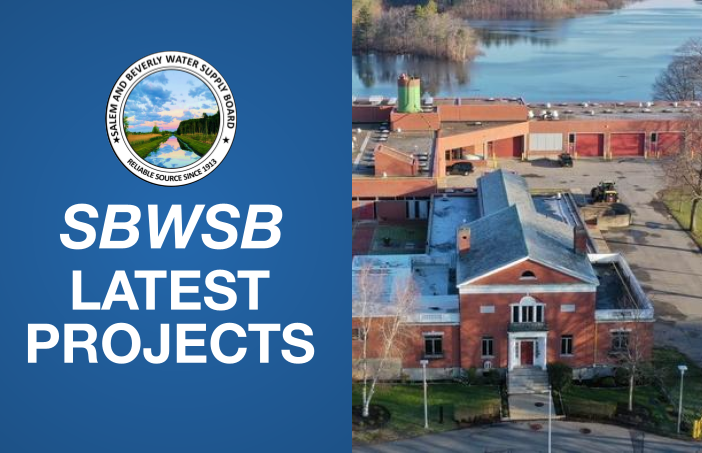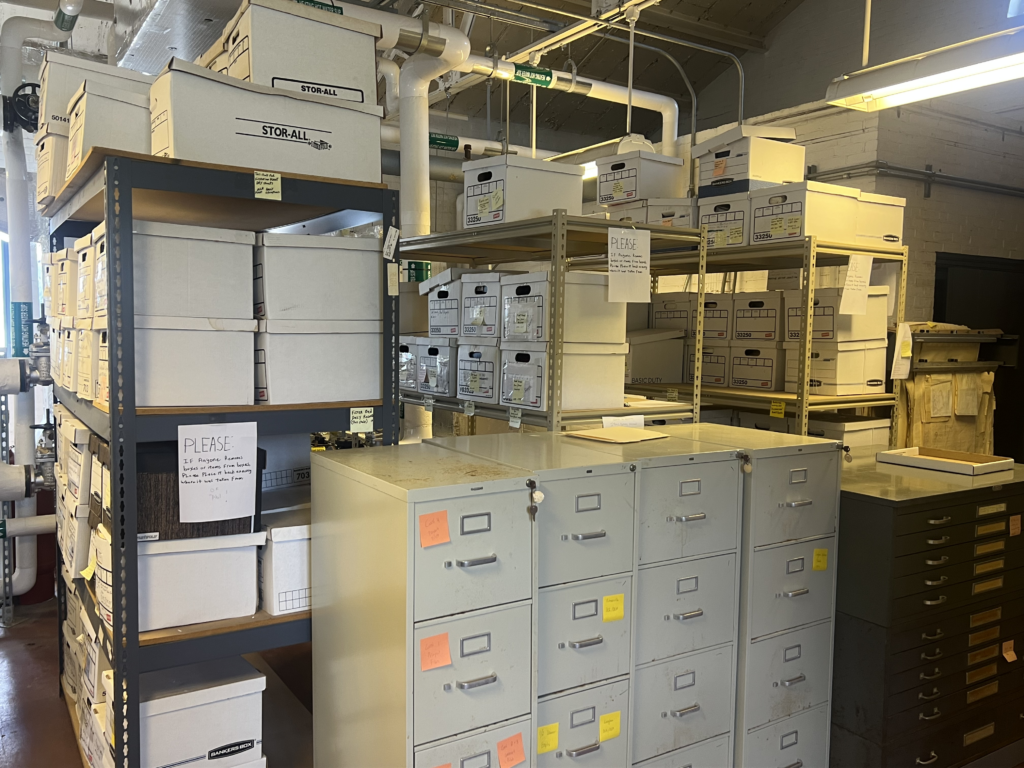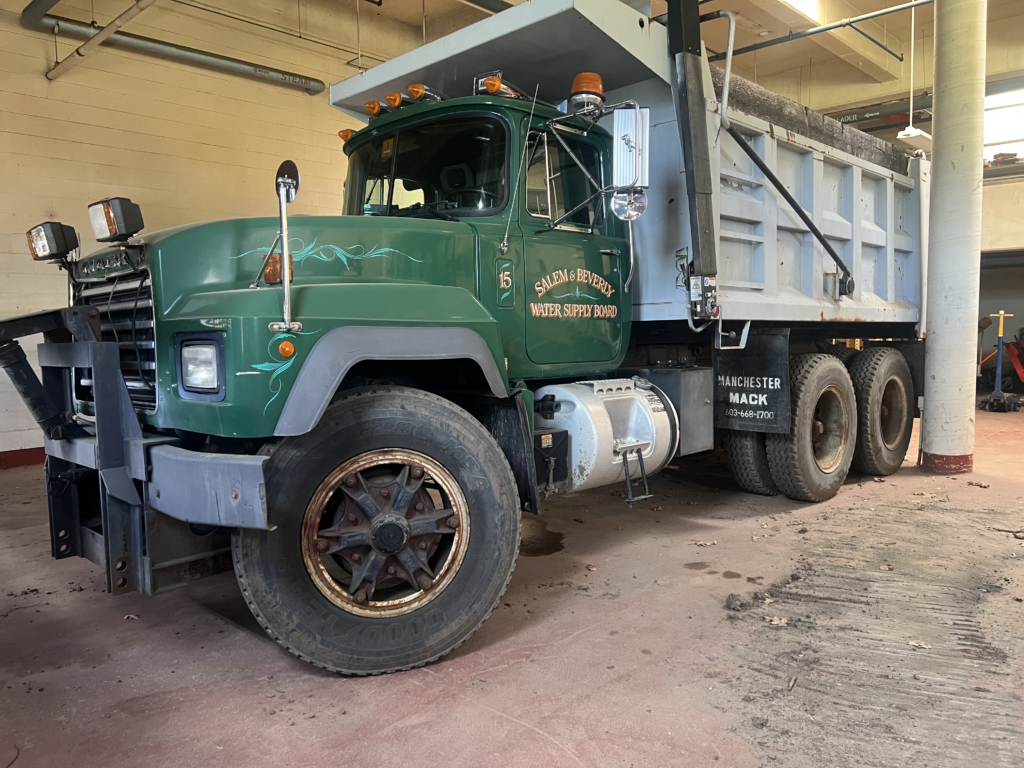★ OUR CAPITAL RENEWAL PLAN ★
Preparing for the Next Generation of Water Treatment
Overview and Background
The Salem and Beverly Water Supply Board (SBWSB), United States, has been providing reliable drinking water to nearly 90,000 residents for over 110 years. As a medium / large water utility in the Northeast, it is considered a critical piece of infrastructure that is required to operate 24×7, 365 days per year. Given its age and the necessity to ensure reliable and resilient operations for the present and into the next several generations, in 2020 the Executive Director recommended, and the Board approved in 2020 the creation of a new Sustainability Manager position dedicated to help modernize the utility.
Many water utilities across the country are increasingly working to implement best management practices to deal with aging infrastructure, costs of replacing assets, increasing expectations for service levels, and increasing risk to the delivery of safe drinking water. The SBWSB is overseen by a 5-member Board of Directors with two representatives from each City led by an independent Chair. The SBWSB manages its three watersheds and a 16 million-gallon-per-day water filtration plant. Once the treated water leaves the plant, the cities of Salem and Beverly manage the complete distribution system including pump stations and storage tanks. In summary, there are three separate entities that work collaboratively to supply water to residents. At SBWSB, there currently is a staff of 17 employees who manage the daily operations and maintenance of the plant and surrounding watershed on behalf of the Board.
The Challenge
The SBWSB’s water filtration plant sits on a 25-acre campus in Beverly, MA USA adjacent to its terminal reservoir (Wenham Lake), pump stations owned by Salem and Beverly, and a residential community. In total, including three reservoirs and adjacent watershed land, the Board owns and maintains approximately 1,158 acres of water/watershed land in several communities. The original plant was constructed in 1935 with a sizable expansion completed in 1978. As a result, many of the Board’s assets are between 89 and 46 years old. Operating 24-hours per day in an ever-changing environment with an aging facility are many of the same challenges faced by other water utilities throughout the United States. The strain on SBWSB’s aging infrastructure drives the need for the organization to prioritize strategic asset management with a two-pronged approach to sustainability; keeping the facility reliable to deliver water day-to-day while planning for the next 100-years of service through a lens on renewal and capital improvement projects.
Understanding the need to develop a long-term modernization strategy, senior leadership understood that a robust plan was required. Aligned with the organization’s strategic objectives for maintaining daily demand, future demand and an ever-changing regulatory environment, the Board created its Sustainable Water Infrastructure Management Program (SWIM) to provide a focus on modernization in four broad areas including people, assets, standards, and technology.
SWIM is the focus of the Board’s long-term improvement efforts with an estimated sustainability investment of $83 million.
S.W.I.M. RACES Plan

In addressing such a challenge of implementing a holistic and comprehensive program with staff, the senior leadership team established a foundational plan to help align the Board of Directors and SBWSB staff on a vision for the future. In a series of workshops, the team refreshed the Board’s Mission, Vision, and Values statements, changed the management focus from that of a public to private utility and began a commitment to communications and training. An emphasis was placed on adopting best management practices, in line with the RACES framework. The program framework is centered around best practices in five (5) “Swim Lanes” including Reliability, Asset Management, Capital Renewal, Energy/Environment and Safety (RACES).
Projects within SWIM fall into five areas:
- Reliability – The existing plant needs to handle daily demand and be robust enough to withstand start and stop and high and low demands associated with renewal and capital improvement projects. So, a robust and regimented preventive maintenance program is a key ingredient to ensure existing equipment is available with breakdowns and emergencies practically non-existent, or at least planned/scheduled. In addition, the organization itself needed a refreshed organizational chart, formal job descriptions, and best management practices training aligned to challenges that lie ahead. The Board is utilizing the Uptime Elements Framework as a key tool for their reliability improvement program. The newly applied job roles and authorities have helped staff understand desired behaviors around additional training, improved communications, and a focus on adopting best management practices. The Board is also actively involved with local educational institutions and support internship programs to train and entice new graduates to seek employment in the water sector.
- Asset Inventory / Management – Understanding critical assets and associated information to assign risk and risk mitigation strategies is important. This information is also needed to build short-, medium-, and long-term asset management strategies, including tradeoffs between reliability and replacement plans.
- Capital Renewal – SBWSB has compiled an initial phased Capital Renewal Plan (CRP) that currently includes 10 phases of work. Phase A is underway with the design of Immediate Needs to address high-risk plant, pipeline, and process control functions. Future capital renewal plans will incorporate sustainable design concepts. Green infrastructure and climate impact considerations are examples within elements of our RACES framework.
- Energy / Environment / Regulatory Management – Managing costs and meeting regulatory requirements requires staff to have robust energy, environmental and regulatory strategies, and plans. From a sustainability perspective SBWSB wants to use natural resources in a thoughtful way that includes the management of hazardous materials in a safe and proper manner. Additionally, the Board supports and participates in regional planning projects including the North Shore Water Resilience Task Force and Emergency Preparedness Exercises as examples.
- Safety – Underpinning the SWIM program is the development of a robust and living safety culture that has a two-pronged focus on safety and wellbeing. A set of refreshed guidelines and an ongoing training regimen will ensure staff and visitors return home safely every day.
Each of the above require the development of formal and living plans to document the current situation and a formalized future work plan. The Board has developed a two-year look ahead master schedule to serve as a roadmap, guiding the implementation in an ever-changing environment. The master schedule is posted in central locations, so staff and the Board of Directors are kept abreast of the work plans and schedule on a bi-monthly basis.
At SBWSB we believe that it is necessary to place our primary focus on sustainability towards the reliability and resiliency of our present-day asset base to ensure deliver of drinking water to our customers. Secondarily the Board is in development of a longer term 100-year sustainment plan for generations to come.
Success
While elements of the SWIM RACES program have only been in play since the fall of 2020, several significant benefits have already been achieved.
Policies, Financial, Risk Control, and Organizational Modernization – The Board has reviewed and updated all key policies, investments, and insurances, established a formal risk management framework, and approved a new organization chart. All positions now have a formal job description and are linked as appropriate with a focus on best management practices.
Preventive / Precision Maintenance Program – A computerized maintenance management system (CMMS) has been selected and a phased implementation plan initiated that includes development of proactive preventive / precision maintenance plans. Training has been provided in many areas of the Uptime Elements Framework.
Asset Inventory – Updates to all critical physical assets have been identified and attribute information collected for input to the CMMS. Critical spares inventory has been through multiple reviews and continues.
Capital Renewal – The Board has developed and continues to update its phased CRP with a current estimated investment of $54 million. An Immediate Needs design contract is underway. And we have completed inspections of critical infrastructure such as a 36-inch transmission pipeline (circa 1895) and our 4-million gallon underground clear well (circa 1935). The CRP includes the first of a series of perpetual 25-year Capital Sustainability Master Plans (CSMP) to help manage costs, risks, service levels, and associated continuous improvement activities beyond the next 100 years.
Energy and Environmental Management – Multi-year Electricity and Gas energy contracts have been secured at costs well below current market pricing. The review and removal of hazardous materials was completed in 2020. The Board follows all regulatory requirements and supports regional projects such as emergency response planning and drought management.
Safety Program – The Board has completed development a formal SBWSB Health & Safety Manual that is made up of 16 individual safety plans. A rigorous training program is under development and a formal Safety Committee is in place to keep the discussion of risk and safety in perpetual motion.
Overall, the Board of Directors is very pleased with the plan and progress to date. They have requested that SBWSB leadership present their sustainability plans with other regional organizations to encourage similar action plans, share experiences, and build coalition partners in the discussion and execution of sustainable development.
SBWSB understands its responsibility to its stakeholders throughout the region and are charged with being strategic and fiscally responsible through best management best practices. Challenged with a limited workforce, aging infrastructure and an estimated $54 million in capital investments, buy-in from the Board to drive sustainable measures into the planning phase of asset life-cycle delivery is imperative for optimal asset performance over time. Crafting a vision and having a single voice from leadership has proven to be an effective communication and change tool.
In addition, staff engagement has proven key to successfully deliver ongoing reliability and resiliency as we build our master plan. Engaging and training the staff on best management terminology and practices has helped develop a common language to allow them to actively participate in required culture change.
SBWSB leadership has learned that to be successful in the integration of best management practices, it is important to have a formal work plan, ongoing communications, the adaptability to changing work plans, trust, and openness to growth among all parties, and maybe most importantly, patience with the speed of change.
By developing a formal Sustainable Water program, SBWSB’s plan has a focus on keeping the facility reliable to deliver water day-to-day while planning for the next 100-years of service.
Authors:
Alan F. Taubert Jr., P.E., Executive Director
Brad Perron, Deputy Director
John Fortin, CMRP, Sustainability Manager




